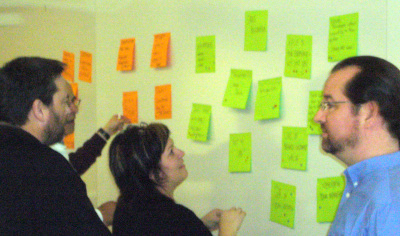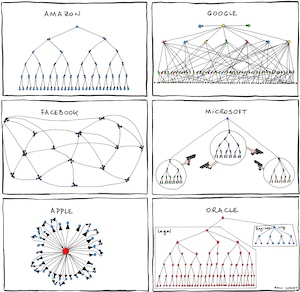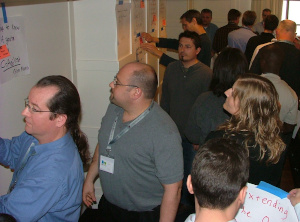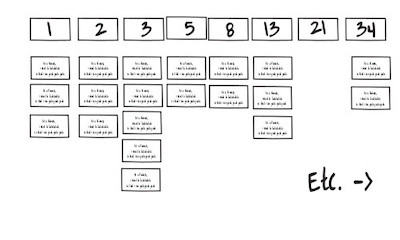
By: Season Hughes
So where do you start?


By: Season Hughes
So where do you start?
Inspired by the Toyota Production System, Mary and Tom Poppendieck describe the seven wastes of software development as: partially done work, extra features, relearning, handoffs, delays, task switching, and defects. In this video from the February Scrum Professionals MeetUp, Kim Poremski explores the seven wastes and introduces tools and techniques to overcome the seven wastes and unlock organizational agility and scalability.
 Nominal Group Technique (NGT) is a facilitation tool that helps a group quickly build a comprehensive list of ideas, issues, options or solutions, and then select the best one(s). NGT works faster than traditional brainstorming, yet generates more complete and higher quality results. NGT prevents the quieter voices from being overwhelmed and allows each participant to contribute to their full potential.
Nominal Group Technique (NGT) is a facilitation tool that helps a group quickly build a comprehensive list of ideas, issues, options or solutions, and then select the best one(s). NGT works faster than traditional brainstorming, yet generates more complete and higher quality results. NGT prevents the quieter voices from being overwhelmed and allows each participant to contribute to their full potential.
The Nominal Group Technique was developed in the 1970’s by Andre Delbecq and Andrew H. Van de Ven. The effectiveness of NGT has been validated by subsequent research.
Let’s see how NGT can be used by a scrum team to create working agreements for their scrum events and other meetings. Such agreements are often called meeting ground rules.
Read the full article…
 A scrum team’s definition of done helps them continuously add value to the product and avoid backsliding or breaking things. When a product meets the definition of done, new value is available and the stakeholders can access the value whenever they choose. One way to think about the definition of done, is as a checklist that helps us guarantee the quality of the product.
A scrum team’s definition of done helps them continuously add value to the product and avoid backsliding or breaking things. When a product meets the definition of done, new value is available and the stakeholders can access the value whenever they choose. One way to think about the definition of done, is as a checklist that helps us guarantee the quality of the product.
Read the full article…
The Satir Change Model has been a valuable tool in my scrum coaching toolbox for nearly 15 years. Read the full article…
 Scaling scrum is all the rage. People love to debate the merits of the various scaling frameworks: LeSS, SAFe, Nexus, Scrum@Scale, Disciplined Agile, FAST Agile, Spotify’s approach, and others. The underlying assumption is that the way to scale up value production is by increasing the number of people and teams. More people and teams can get more done, right? Perhaps, but there are significant costs to scaling up headcount, and alternative ways to scale up value production.
Scaling scrum is all the rage. People love to debate the merits of the various scaling frameworks: LeSS, SAFe, Nexus, Scrum@Scale, Disciplined Agile, FAST Agile, Spotify’s approach, and others. The underlying assumption is that the way to scale up value production is by increasing the number of people and teams. More people and teams can get more done, right? Perhaps, but there are significant costs to scaling up headcount, and alternative ways to scale up value production.
Read the full article…
This page is old. Checkout the best list of agile conferences on the web.
 I recommend conferences and MeetUps as a great way to learn, network, and earn Scrum Educational Units (SEUs). This past year was challenging for such events. Many were cancelled. Some managed to inspect and adapt, moving online.
I recommend conferences and MeetUps as a great way to learn, network, and earn Scrum Educational Units (SEUs). This past year was challenging for such events. Many were cancelled. Some managed to inspect and adapt, moving online.
I’m pleased to share our 2021 list of agile, and agile adjacent, conferences. It’s the largest list we’ve ever published.
 A product owner recently asked if it was okay to want more velocity from their team. Their team usually completed product backlog items (stories) that totaled about 180 points every sprint. The product owner thought: if my team could increase velocity to 200 points every sprint, that would be better.
A product owner recently asked if it was okay to want more velocity from their team. Their team usually completed product backlog items (stories) that totaled about 180 points every sprint. The product owner thought: if my team could increase velocity to 200 points every sprint, that would be better.
I think it’s very much a part of the human condition to always want more. However, I’m not sure velocity is what you want more of.
Read the full article…
 Scrum teams are expensive. Salaries and the other costs of maintaining a team represent a significant investment. A well run sprint review can dramatically improve the return your organization gets on this investment (ROI). Sadly, sprint review is widely misunderstood, and poorly implemented. The result is wasted time and lost opportunity. Let’s explore how to unlock the value of sprint review.
Scrum teams are expensive. Salaries and the other costs of maintaining a team represent a significant investment. A well run sprint review can dramatically improve the return your organization gets on this investment (ROI). Sadly, sprint review is widely misunderstood, and poorly implemented. The result is wasted time and lost opportunity. Let’s explore how to unlock the value of sprint review.
Read the full article…
 Relative estimation, using story points, has proven itself superior to traditional time-guessing approaches. Common approaches to creating story point estimates, notably planning poker, aren’t great at getting the whole team involved in the conversation. Usually, only the outliers participate. This article describes a better approach, which we have been using with our clients for years.
Relative estimation, using story points, has proven itself superior to traditional time-guessing approaches. Common approaches to creating story point estimates, notably planning poker, aren’t great at getting the whole team involved in the conversation. Usually, only the outliers participate. This article describes a better approach, which we have been using with our clients for years.
Read the full article…